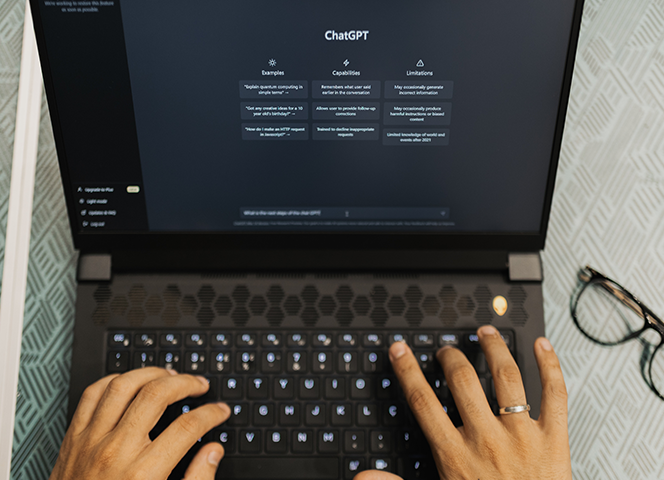ChatGPT has quickly become one of the most talked-about applications, with many people wondering how to use the chatbot to assist with their work. It’s better suited to some roles than others, but here are some of the best ways for human resources (HR) professionals to use it.
1. Writing Job Descriptions
Even when an HR professional is writing a description for a job that already exists in a company and for which they’ve previously hired, it’s always a good idea to renew the content, making it maximally relevant to what people will do in the position.
ChatGPT can assist with that, especially when people include specifics in their prompts. The team behind an HR news website had ChatGPT compose job descriptions for several positions. However, they stipulated that the content must be transparent, bias-free and give details of what the job offers. People then critiqued how well the chatbot did with this task.
The results showed ChatGPT could write the material well and provide enough information to attract qualified candidates. However, some test descriptions generated in this task were less detailed than others. There were also cases where the chatbot mentioned requirements the HR professionals did not specify, such as a bachelor’s degree.
These results mean HR professionals must always take the time to carefully read what ChatGPT creates and make sure it fits their expectations. The chatbot can make most of the work more efficient but does not remove the need for human supervision.
2. Attracting Passive Candidates
It’s sometimes necessary to reach out to candidates not actively seeking employment at a respective company yet. People at an onboarding software company decided to see what would happen when they asked ChatGPT to try and interest someone in an open position.
People at the company asked the chatbot to begin the content by appealing to an interest in career growth, then describe the job opportunity with a friendly, convincing and human-like tone while using industry language. The company representatives also asked for the content to convey a sense of urgency and include a call-to-action line. Finally, they requested that ChatGPT give some potential email subject lines to use.
These tasks show how HR professionals can use automation to become more productive, making them more efficient and less stressed. However — like the examples in the previous section — this ChatGPT content required some changes and oversight before distributing to potential new hires.
People should consider trying ChatGPT for recruitment emails to freshen up phrasing or try slightly different approaches to the methods they usually use. HR professionals could even consider investigating whether content primarily written by humans or the chatbot performs better in getting candidates interested.
3. Improving the Onboarding Process
Statistics indicate retention rates can improve by up to 82% when a company has an excellent onboarding process. That’s a compelling reason for HR professionals to consider how ChatGPT could help them improve the processes that occur when a new hire first joins the company.
The chatbot could help write emails about upcoming orientations or create content that welcomes people to the organization. Human resources professionals could also rely on it to assist with crafting content about how to log in to the company’s systems.
People at some businesses have experimented with using ChatGPT to write material about policies for vacation time, sick days, acceptable working hours, whether workers can accept gifts from clients and so on. Most HR employees likely have existing material about these topics. However, ChatGPT may help make the content more relevant.
HR professionals could also see how ChatGPT responds to more open-ended prompts, such as “Tell me what people want to know when first joining a company. The answers might fill in the gaps an existing onboarding process has.
4. Preparing for Performance Reviews
Employees often feel nervous before performance reviews, but HR professionals may experience some anxiety too. It primarily centers on the fact that these leaders must provide constructive feedback. How did an employee excel since the last performance review and what areas for improvement should they focus on in the coming months?
HR professionals should be aware that there are better ways to use ChatGPT than having it write the bulk of the performance review with very little guidance. Some people tried that and got sexist and racist content from the chatbot.
However, service providers catering to HR professionals have already explored how they could include ChatGPT in their business model for better results. One such platform is reportedly the first tool that lets users input feedback from peers and managers so ChatGPT can use it when creating auto-generated performance reviews.
The tool can incorporate feedback from a broad assortment of people who know the individual receiving the performance review. That way, there’s no risk of the content skewing from the bias or opinions of one person or just a few. This ChatGPT application can even populate the reviews with specific comments from people. Managers then review the content and edit it if necessary.
Getting ready for a performance review can be a time-intensive process for a human resources professional — largely because some employees may have numerous other people who report to or regularly interact with the person under review. However, this example shows ChatGPT can make the process more efficient.
5. Maintaining Appropriate Access Controls
Overseeing access to a building is one aspect of a human resources professional’s job some people overlook. Indeed, people on the HR team may not solely decide who can enter a building or workplace area, but they’ll likely engage with security professionals to make such judgments.
One security software company created a chatbot developed with ChatGPT’s technology. It claims to increase productivity by more than 100 times by giving people quick insights about access control and risk.
For example, a person can determine how many people are in a particular part of a building at any time. They can also break down the numbers to ask the chatbot for the number of employees versus visitors in an area.
HR professionals could use ChatGPT this way to see if the expected number of employees who were supposed to assemble in a particular room for training has arrived yet. The chatbot also allows people to make historical queries, such as to find out how many badges for new hires a business issued in the previous month. Additionally, users can learn which team members with restricted access privileges will need further training because their current credentials expire soon.
This application of ChatGPT’s technology could help HR professionals find the information they need faster, allowing them to receive it in the chatbot’s interface rather than searching through databases. This advantage would be particularly beneficial in large organizations or those with lots of hiring activity.
ChatGPT Is Worth Exploring for HR Duties
These five examples show why HR professionals should consider using ChatGPT for some duties. It doesn’t give perfect results and still requires human oversight, but the chatbot could raise productivity by improving some workflows.
This post was supplied to HRTech247.com by Zac Amos of ReHack.com






